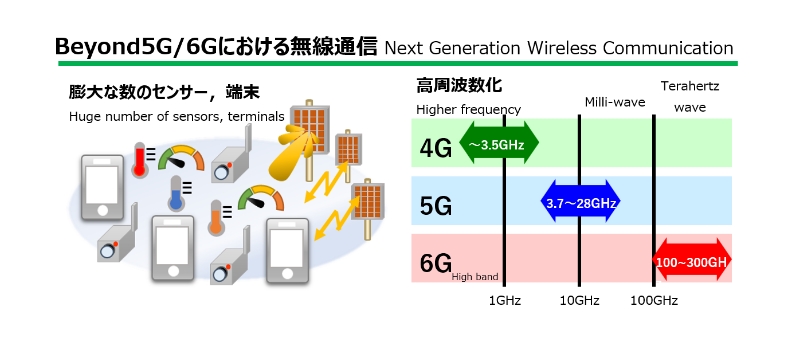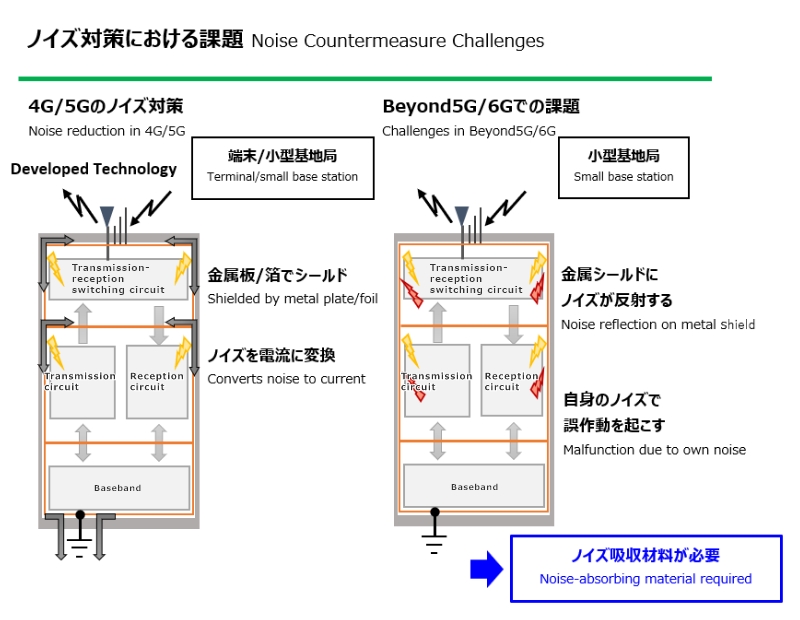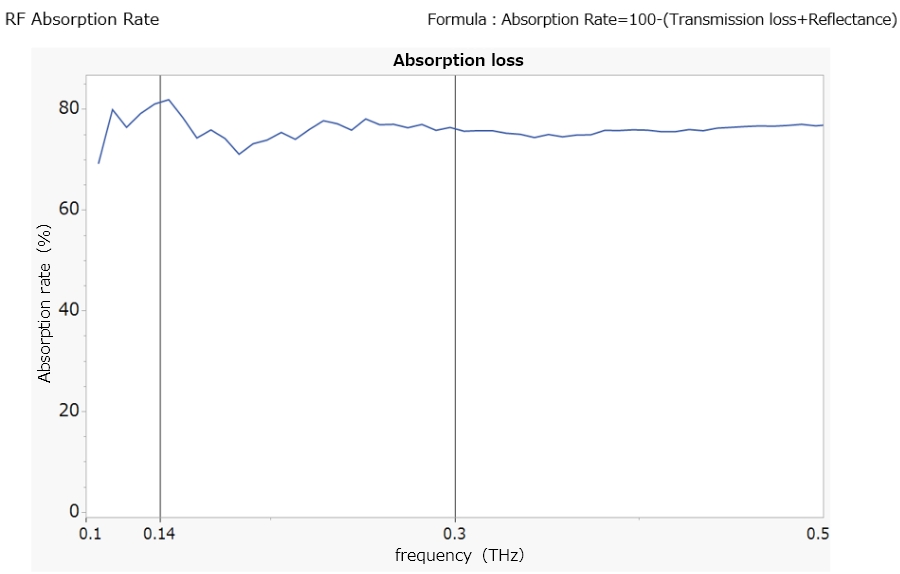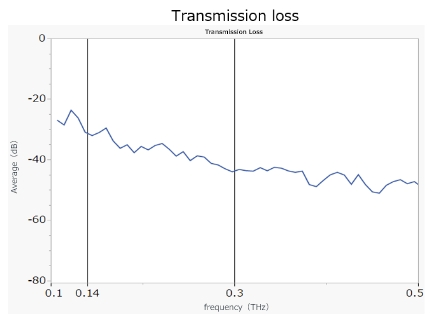Electromagnetic Wave Absorbing Material for Beyond 5G/6G
07/01/2024
Motivation
- A frequency bandwidth between 100 and 300 GHz (sub-terahertz wave) is expected to be introduced to accommodate increasing data volume in the coming next generation communication based on a Beyond 5G/6G technology.
- The demand for a new noise absorbing material which can accommodate frequencies between 100 and 300 GHz (sub-terahertz) wave, is expected to prevent device malfunctions (self-poisoning).
Issue
A thin film with electromagnetic noise wave absorbing properties for the 100 to 300 GHz (sub-terahertz wave) range is required.
Results and Findings
Able to absorb 70% or more of electromagnetic waves at a frequency bandwidth range of 100 to 300 GHz
Background of the Issue
Motivation for the Development
- Beyond5G/6G technology, a next-generation information communication infrastructure to be introduced in the 2030s, is considered not just an advanced version of conventional mobile wireless communication, but as an integrated network which comprehensively connects wired- and wireless- communications as well as land-, sea-, air-, and space- communications. This new integrated network is anticipated to establish the base for all types of industries and social activities. Accordingly, a significant increase in the volume of data processing is anticipated due to a rise in the number of sensors and terminal devices.
- To accommodate the increasing data volume, a project to enable a high-speed and high-volume communication using a frequency bandwidth higher than the millimeter wave used for 5G technology is currently underway. The frequency bandwidth between 100 and 300 GHz (sub-terahertz wave) is expected to be used for the project.
- However, 100 GHz or more high frequency electromagnetic waves tend to be reflected by shielding metal plate/foil sheet. Noise generated inside a device may cause self-poisoning. Accordingly, the demand for a noise absorbing material which can accommodate frequencies between 100 and 300 GHz is expected.


Overview of the Development
Conventional noise absorbing materials are designed to cancel noise working together with a metal plate leveraging different phases of a reflected wave and an incident wave. There were no materials that independently provided sufficient noise absorbing capability. Another issue with the conventional noise absorbing materials is that they are only available in sheet-type products, making them less workable for application to complicated shapes and corners.
Consequently, we have developed a liquid material which provides sufficient noise absorbing capability independently without the use of a metal plate, etc.
Concept of the Development
- Develop a thermally curable liquid material suitable for applications to complicated shapes and corners
- Independently absorb electromagnetic waves between 100 and 300 GHz without the use of a metal plate, etc.
Developed Technology
Use of a specialty filler enables absorption of electromagnetic waves between 100 and 300 GHz
Results and Findings
- Able to absorb 70% or more of electromagnetic waves at a frequency bandwidth range of 100 to 300 GHz
- Able to absorb 80% or more of electromagnetic waves at 140 GHz, a frequency range, which has potential utilization for the 6G technology
Results of Attenuation Measurement of Terahertz Waves





